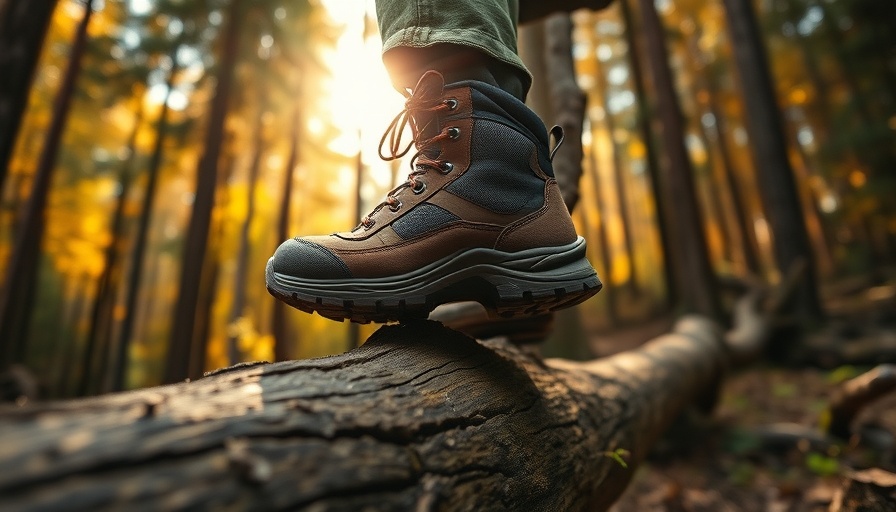
Understanding Hiking Injuries: Prevention Strategies for Outdoor Enthusiasts
Hiking offers a remarkable chance to connect with nature, boost physical fitness, and enjoy the great outdoors. However, with its rewards come risks, including common hiking injuries that can sidetrack even the most seasoned adventurer. This guide presents a comprehensive overview of these injuries and actionable strategies to prevent them.
Common Hiking Injuries: What You Should Know
Hikers often encounter a myriad of injuries, ranging from minor discomfort to serious conditions. Here are some of the most prevalent injuries:
- Sprains and Strains: These typically involve ankle or knee injuries caused by uneven terrain. Adequate warm-up and stretching can help reduce these incidents.
- Blisters: Friction from poorly chosen footwear can lead to painful blisters. Selecting the right shoes and wearing moisture-wicking socks are essential preventive measures.
- Knee Pain: Overexertion or improper technique, especially downhill, can strain the knees. Regular strength training and flexibility exercises can fortify knee stability.
- Fractures: In some cases, missteps on hazardous paths can result in fractures. A focus on footing and pace can mitigate risks significantly.
- Sunstroke and Dehydration: Hiking in warm conditions can lead to dehydration. Carrying plenty of water and taking breaks in the shade is crucial for avoiding heat-related illnesses.
Understanding Why These Injuries Occur
Many hiking injuries stem from a combination of environmental, physical, and preparation-related factors. The unpredictability of natural terrains, coupled with an often hurried approach to fitness, can lead to preventable accidents.
Moreover, as hikers ascend, the oxygen levels change, which can affect stamina and exacerbate fatigue-related injuries. Knowledge of these dynamics is vital in planning an effective hiking strategy.
Preparing for Your Hike: Essential Tips
Preparation can be the differentiator between an enjoyable hiking experience and a painful one. Here are some tips to keep in mind:
- Choose Appropriate Footwear: Invest in quality hiking boots that offer proper support and have been broken in ahead of time. Your choice of socks matters too—opt for those that wick away moisture.
- Warm-Up and Stretch: Before stepping onto those trails, a proper warm-up routine including stretching helps enhance flexibility and reduce the risk of strains.
- Pace Yourself: Understand your limits. Acclimatizing to hilly or steep sections takes time. Listen to your body and rest when needed.
- Stay Hydrated: Carry sufficient water for your trip length and consider high-energy snacks to maintain energy levels.
Incorporating Strength Training into Your Routine
Engaging in strength training exercises not only benefits your overall fitness but also prepares you for the physical demands of hiking. Focus on lower body workouts such as squats, lunges, and calf raises to build muscle endurance.
Integrating core exercises enhances stability and may help prevent falls, while flexibility workouts—like yoga or Pilates—promote muscle recovery and joint mobility.
A Look at the Aftermath: Signs You Need Medical Attention
While a little soreness after a hike can be expected, persistent pain, swelling, or inability to move a joint might indicate a more serious injury needing medical evaluation. Trust your body; if something doesn’t feel right, don’t hesitate to seek professional help.
Connecting Mind and Body: The Importance of Recovery
After a strenuous hike, give your body the time it needs to recover. This includes adequate nutrition, hydration, and rest. Incorporating elements like foam rolling can alleviate tension in muscles and enhance recovery.
Moreover, maintaining a positive mindset aids the body’s natural healing processes. Embrace mindful practices such as meditation or light yoga as part of your recovery routine.
Conclusion: Embrace Your Hiking Journey
Hiking presents invaluable opportunities for physical fitness and mental clarity. By understanding potential injuries and implementing proactive prevention strategies, you can enhance your experience in the great outdoors safely. So lace up your boots, and embark on your next adventure with confidence!
Ready to hit the trails? Remember to take the necessary precautions to stay safe while hiking. Embrace nature's adventures with the knowledge you need for a positive experience.
 Add Row
Add Row  Add
Add 




Write A Comment